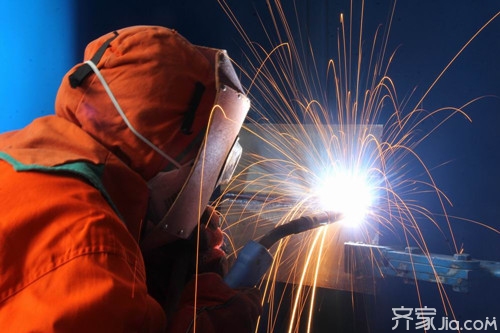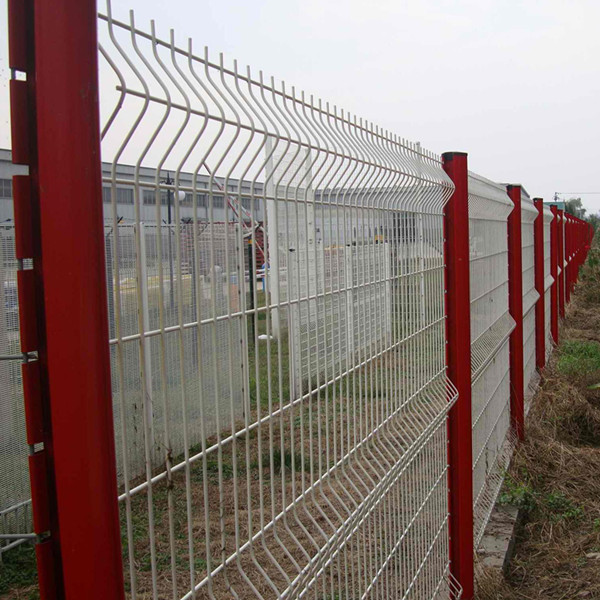There are many sources of energy for modern welding, including gas flames, arcs, lasers, electron beams, friction, and ultrasonic waves. In addition to being used in factories, welding can also be carried out in a variety of environments, such as in the wild, underwater and in space. Next, Xiao Bian gave everyone a detailed introduction to several related categories and methods of welding.
First, welding classification
(1) Fusion welding
Welding is a method in which the workpiece interface is heated to a molten state during welding, and welding is completed without applying pressure. During welding, the heat source rapidly heats and melts the interfaces of the two workpieces to be welded to form a molten pool. The molten pool moves forward along with the heat source, forming a continuous weld seam after cooling and connecting the two parts together.
In the welding process, if the atmosphere is in direct contact with a high temperature molten pool, oxygen in the atmosphere will oxidize metals and various alloying elements. Nitrogen in the atmosphere, water vapor, etc. enter the molten pool, and defects such as pores, inclusions, and cracks are formed in the weld during subsequent cooling, which deteriorates the quality and performance of the weld.
In order to improve the quality of welding, various protection methods have been developed. For example, gas-shielded arc welding uses argon and carbon dioxide gas to insulate the atmosphere to protect the arc and bath rate during welding. For example, when welding steel materials, deoxidation is performed by adding titanium iron powder with high affinity for oxygen in the electrode coating. It is possible to protect the beneficial elements manganese, silicon, etc. of the electrode from oxidation and enter the bath. After cooling, high quality welds are obtained.
The characteristic of this type of welding method is that the joints of the metal to be welded are locally heated to a molten state, they are fused to each other, and the cooling and solidification are combined with each other. Such as gas welding, arc welding, submerged arc welding, gas shielded welding, electron beam welding and so on.
(2) Pressure welding
Pressure welding is under pressure conditions, so that the two workpieces in the solid state to achieve inter-atomic bonding, also known as solid-state welding. The commonly used pressure welding process is resistance butt welding. When the current passes through the connection ends of the two workpieces, the temperature rises due to the large resistance. When heated to the plastic state, the connection is integrated under the axial pressure. A common feature of various pressure welding methods is the application of pressure during the welding process without the addition of filler material. Most pressure welding methods such as diffusion welding, high frequency welding, cold pressure welding, etc. have no melting process, and thus there is no problem of burning of the beneficial alloy elements such as welding, and the intrusion of harmful elements into the weld, thereby simplifying the welding process, and also Improved welding safety and hygiene conditions. At the same time, the heat affected zone is small because the heating temperature is lower than the fusion welding and the heating time is short. Many materials that are difficult to weld by fusion welding can often be pressure welded into high-quality joints with the same strength as the base metal.
The characteristic of this type of welding method is that during the welding process, a certain pressure is applied to the metal to be welded (or it can be heated or not at the same time), so that the contact surface between the parts to be welded is brought into precise contact, so that the atoms can have a bonding effect. Get a permanent connection. Such as resistance welding, friction welding, diffusion welding and so on.
(3) Brazing
Brazing is the use of a metal material with a lower melting point than the workpiece as the solder. The workpiece and solder are heated to a temperature higher than the melting point of the solder and lower than the melting point of the workpiece. The workpiece is wetted with the liquid solder and the gap is filled and the workpiece is filled. Inter-diffusion between atoms to achieve the welding method.
The joint formed between two connected bodies at the time of welding is called a weld. Both sides of the weld are subjected to welding heat during welding, and changes in structure and properties occur. This area is called the heat-affected zone. Due to the difference in welding materials, welding currents, etc. of the workpiece materials during welding, the welded joints and heat-affected zones may be overheated, embrittled, hardened, or softened after welding, and the performance of the weldment may also be degraded, which may deteriorate the weldability. This requires adjustment of the welding conditions. Preheating before welding, heat preservation during welding, and heat treatment after welding can improve the welding quality of weldments.

Second, the welding method
According to the different state of the metal material in the welding process, the welding method is currently divided into the following three categories:
(1) In the process of fusion welding, the joint of the weldment is heated to a molten state. The method of welding without pressure is called fusion welding. Common welding methods include arc welding, gas welding, and electroslag welding.

(2) During pressure welding, pressure must be applied to the weldment (with or without heating) to complete the weld. This is called pressure welding. Commonly used pressure welding methods include resistance welding (butt welding, spot welding, seam welding), friction welding, rotating arc welding, ultrasonic welding, and the like.
(3) During the brazing process, a metal material with a lower melting point than the parent metal is used as the brazing material, and the brazing material and the brazing material are heated to a temperature higher than the melting point of the brazing filler metal and lower than the melting point of the parent metal, and wetted with the liquid brazing material. The method of joining the weldment by means of the base metal, filling the joint gap and interdiffusion with the base metal is called brazing.
Commonly used brazing methods include flame brazing, induction brazing, furnace brazing, salt bath brazing and vacuum brazing.
The above is a brief introduction for Xiaobian. If you want to know more related information, please continue to pay attention to Qijia Consulting. More exciting consultation, please stay tuned.
Curtain installation method
The wire mesh fence including : airport fence/ security fence, court wire mesh fence, farm fence, community wire mesh fence, Temporary Fence, workshop separation fence, holland wire mesh fence, etc. In general, the material of wire mesh fence is low carbon steel or stainless steel. The surface treatment of wire mesh fence : PVC , painted, galvanized and powder coated.The wire mesh fence be widely used at latge airports both at home and abroad, used in highways, railways, station, service area, protecting tax area, harbor, fields, etc.
The advantages of wire mesh fence :
unique structure
easy and quick to install
easy to transport
good anti-corrosion
enduring
hard to fade and transform
beautiful shape

Wire Mesh Fence
Wire Mesh Fence,Temporary Fence,Chain Link Fence,Euro Fence
ANPING COUNTY SHANGCHEN WIREMESH PRODUCTS CO.,LTD , https://www.scfiltermesh.com